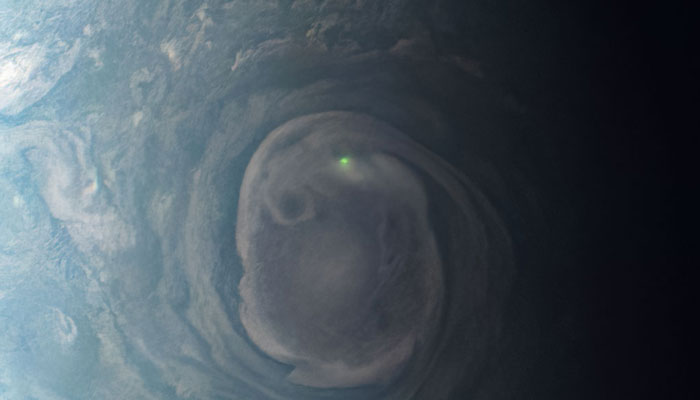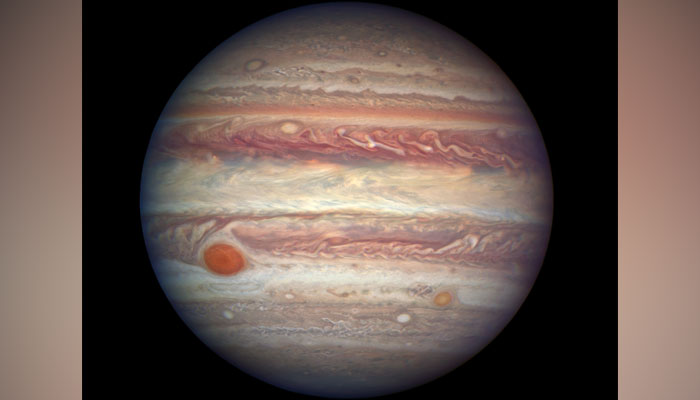Nasa's Juno space probe captures lightning on Jupiter's north pole
Juno studies the planet’s wild weather and is now on its extended mission that will likely end in 2025
June 18, 2023

In a rare and amazing view from deep space, Nasa's Juno spacecraft on its 31st flyby snapped a picture of a lightning bolt caused likely due to the clouds made from ammonia water at Jupiter's north pole.
While releasing the image from our solar system’s gaseous giant, Nasa wrote in its press statement on Instagram that "our Juno spacecraft observed the glow from a bolt of lightning in a vortex near Jupiter's north pole."
"Juno captured this view on December 30, 2020, from about 19,900 miles [32,000 kilometres] above Jupiter's clouds as it approached the planet."
The statement further added that on Earth, lightning bolts originate from "water clouds and happen most frequently near the equator," while on Jupiter "lightning likely also occurs in clouds containing an ammonia-water solution and can be seen most often near the poles."
Juno space probe has been orbiting around Jupiter since 2016 and was launched into space in 2011. The probe is tasked to gather information about the evolution, composition and crucial details of the solar system’s largest planet.
It also studies the planet’s wild weather. The Juno space probe is now on its extended mission that will likely end in 2025.
Last month, a study published journal Nature Communications suggested similarities between the lightning on Jupiter and Earth despite huge differences in the chemical compositions of the atmospheres of both planets.
Our world is a small rocky planet whereas Jupiter — named after the ancient mythological Roman god who could fling lightning bolts — is a gas giant so enormous that all the other planets in our solar system could easily fit inside it including more than 1,300 Earths.

Scientists noted that the pulses seen on Jupiter are flashes of lightning that spark with time separations of about a millisecond, similar to thunderstorms on Earth.
Lightning on Jupiter was confirmed when telltale radio emissions at audible frequencies were recorded in 1979 by Nasa's Voyager 1 spacecraft as it ventured through the solar system.
The solar system's other gas-dominated planets — Saturn, Uranus and Neptune — were also witnessed to have lightning.
Other studies have detailed other similarities in the lightning processes on Jupiter and Earth. For instance, lightning rates on the two planets are similar though the distribution of lightning on Jupiter differs from Earth.
Jupiter is made up of hydrogen and helium, with other gases. Stripes and a few storms dominate the colourful appearance of Jupiter, the fifth planet from the sun with a diameter of about 88,850 miles (143,000 km).









